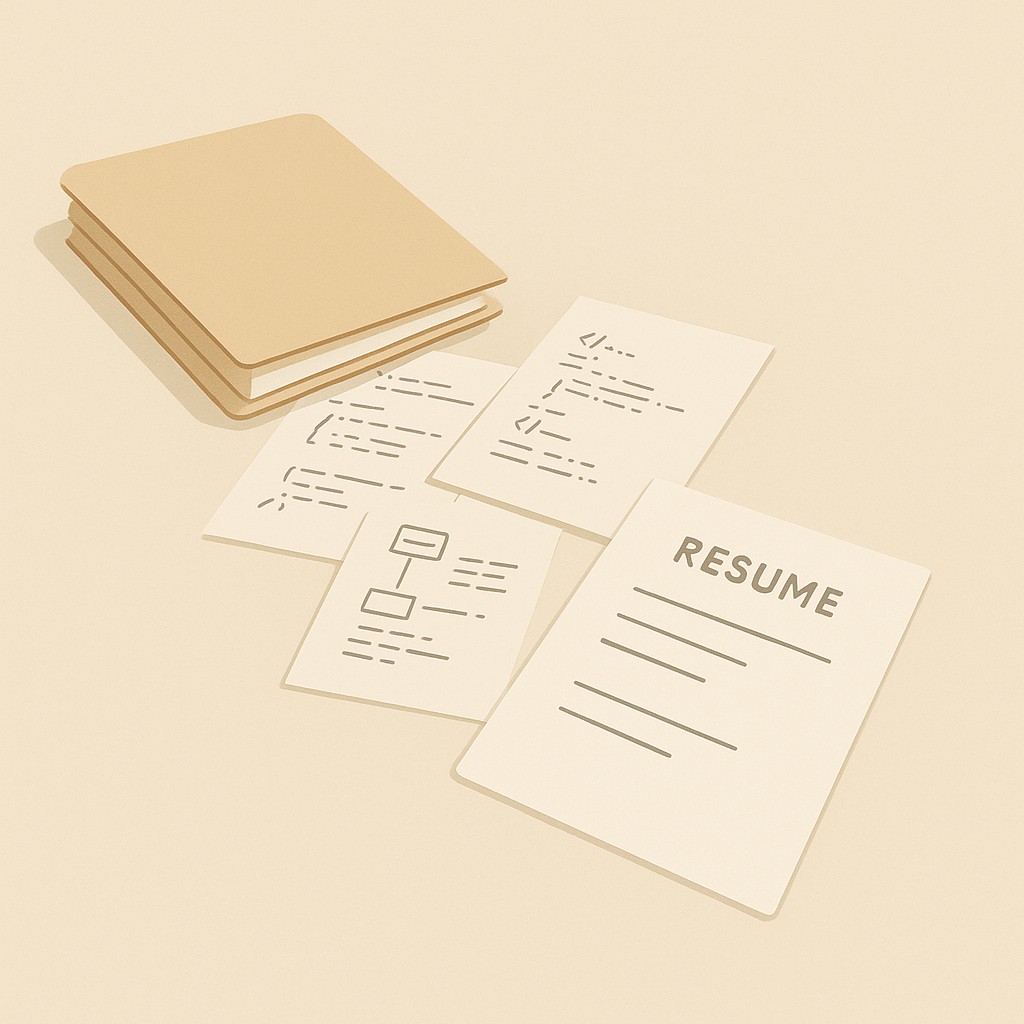Build in Public for Engineers: Small Updates, Big Credibility
Build in Public for Engineers: Small Updates, Big Credibility

Why Engineers Stay Invisible Until the Last Minute
A few weeks ago, I was scrolling before work and ran across Stephane’s post—one of those clear, no-nonsense reminders. If you’re an engineer, adopt build in public for engineers early to kickstart your online presence. It couldn’t have hit at a more familiar moment. I’ve seen the scene play out dozens of times. Engineers like us hustling to refresh resumes and clean up portfolios, all when the clock runs out during a job search.
I’ll own this—I used to treat visibility as a purely job-seeking thing. My learning, my code, my actual engineering stories? All tucked away in private docs, buried in repo commit messages or personal journals. My resume would attempt to flatten all that into a handful of sparse bullet points, some of which barely hinted at what I really did or learned. Years of progress, squeezed into a page no manager ever read closely.

But let me flip that for a second. What if, instead of waiting for panic mode, you already had a living trail—an engineering portfolio online with logbook-style posts, project notes, or even short updates that show what you’ve tried, what you’ve learned, and where you struggled or broke through?
This isn’t about chasing internet fame or feeling pressure to crank out daily wisdom. That expectation overwhelms even the most outgoing among us. Building a visible engineering brand—a software engineer’s personal brand—isn’t supposed to wreck your evenings or turn work into a performance. What matters is steady, genuine documentation—a habit, not a side hustle. The trick is knowing what you can share safely (protecting confidential details), while making progress visible in small ways. Over time, those bite-sized updates add up, forming a dependable signal of growth and problem-solving that compounds, regardless of your follower count.
When you document engineering work, you’re signaling the problem-solving and teamwork skills that over 60% of employers prioritize—and frankly, that speaks louder than a resume ever could.
How Small Updates Build Big Credibility (Without Risk or Burnout)
You don’t have to post daily or act like an influencer to make this work. Honestly, even monthly updates can move the needle. The rhythm is up to you. Consistency over time matters way more than the absolute frequency.
Worried about confidentiality? The trick is to focus your posts on the lesson or approach, not the sensitive guts. I learned to strip away client names, code snippets, and anything proprietary—then just share what changed, why it mattered, and how I solved it. Most useful updates boil down to the pattern or idea, not the details that get you in legal trouble.
If you’re stuck on what counts as an update, it’s often smaller than you think: a bug you squashed and how you found it, a performance tweak you made in staging, a diagram showing why you picked one trade-off over another, or a short takeaway from a recent project that surprised you.
The time fear is real, but you can dodge it with a basic template. Take five or ten minutes to jot a quick note. What was the problem, what did you try, how did it turn out, and what’s one thing you learned. That’s it. No story arc required.
Here’s where it gets powerful. In building in public as a developer, steady little signals—a few sentences at a time—stack up. Over months, even tiny posts begin to show your momentum and problem-solving chops. It’s just about documenting your journey in small, authentic ways, and that slow accumulation builds trust long before you need it. The opportunities follow naturally from what’s visible, not from a rush at the last minute.
Last year, I stumbled into a weird recursive situation—posting about how posting felt pointless. I ended up writing a quick update describing the experience of wrestling with my own hesitation, only to realize a week later that someone had landed in the same spot and replied with their own “stalled out” story. That loop actually broke my own rut. It was messy and kind of vulnerable, but seeing someone else fit the same pattern snapped me back into sharing steady, imperfect pieces.
Get Moving: A Frictionless Start
Pick one platform that actually fits your style and workflow. If you’re writing quick professional updates, LinkedIn is fine and no one expects essays there. For code, GitHub shows visible commits, issues, or even README notes. If you think best in longer form, a blog lets you dig in without worrying about short attention spans.
Six months ago I tried to start “seriously” sharing. I obsessed over a pristine blog layout and a clever post title for weeks. Somehow, the posts never came together—I stalled out, waiting for perfect wording and a slick site. Meanwhile, my GitHub commit messages were quietly telling my story. Real progress, not always beautiful, but showing exactly what I built and figured out each day. It felt less like performing and more like leaving breadcrumbs.
Kind of like learning to cook. At first I worried about plating, but soon realized technique and honest notes got me further. Looking back, I wish I’d leaned harder into putting progress above presentation. When you’re just starting to build visibility, get the work out there and polish later if you want.
Let your proof-of-work do the talking. Link to open-source contributions, even if they’re minor. Share small side projects that taught you something or add a quick visual walk-through—a screenshot, a diagram—of how you tackled a thorny bug. These feel manageable and show skills without making you overshare.
If you want a “first post” script, keep it simple. Aim for under 150 words. Focus on one takeaway: “I solved X problem today, learned Y, and here’s what worked.” That’s enough. Hitting publish is the win. The polish can come next round.
Set Safe Boundaries and an Easy Rhythm
First things first: share the thinking, not the secrets. If you’re nervous about crossing lines, it’s for good reason. NDAs are the legal guardrails on what can (and can’t) go public. I kept a checklist tacked beside my monitor. Strip out any client names, swap out numbers for loose ranges or rough percentages, and if I needed a diagram, I made sure to abstract it so nothing proprietary leaked through. Sharing your general approach—why you tried something, how you weighed trade-offs—instead of specifics means you respect those boundaries. Sharing the approach instead of specifics respects NDAs—these legal agreements set clear limits on what can be disclosed.
It’s easy to lose sight of the real payoff amid all the caution. So here’s the blunt truth. Consistent, visible progress attracts opportunities long before you need them. Sharing your journey online builds credibility and creates opportunities that a resume alone can’t.
The easiest way to keep the momentum without draining your energy? Set a simple cadence to share engineering updates—weekly or monthly works for most of us. Last Friday of the month, drop a quick note. Or block ten minutes after standup once a week. I’d keep a scratchpad or a folder with interesting links or small wins, so when “update day” rolled around, I wasn’t starting from zero.
Whenever someone commented or messaged, I tried to reply—even if it was just “Thanks for the tip!” Asking for feedback, offering a perspective, or just connecting with a peer made the whole process feel less like shouting into the void. The funny part is, visibility grows as much through lightweight conversation as through the updates themselves. The more you show up, the more likely it is you’ll stumble into someone solving the same problems, or discover the next role before it even gets listed. And yes, for most of this, LinkedIn is plenty.
Keep your boundaries clear, your rhythm doable, and let the conversations happen. Visibility compounds, even at this slow, real-world pace.
Build in Public for Engineers: Publish Your First Update—Start Small, Build Big
The whole point here is straightforward. When you embrace build in public for engineers—early and with regular, real updates—you create a body of work that quietly advocates for you. Not just when you’re hunting for a job, but all the time.
Let’s get practical. If you want to kick this off, write a short update today. Use the template: what problem did you face, what did you try, and what did you actually learn? It could be as simple as a few sentences about wrangling a gnarly bug or testing a new library. Share it on your platform of choice—GitHub, LinkedIn, your dev blog. (Drop your idea for a post in the comments, or share your first post and tag me—I’d love to support you and see how you’re showcasing your growth!)
If you need a nudge, pick one takeaway from a recent project—something small but honest—and ask for feedback. If you’re unsure about crossing any confidentiality lines, leave a note. I’m happy to reply or weigh in.
If you want a quick way to turn small, NDA-safe updates into clean posts, our AI helps you draft, refine, and publish concise LinkedIn or blog notes in minutes to keep your progress visible.
This stuff compounds. Steady documentation builds trust and credibility over time, even if you start with just one public post. You don’t have to wait until it’s urgent—start now, let the habit build, and see where it takes you.
And I’ll admit, sometimes I still hesitate to hit publish. I know it moves things forward, but some reluctance just hangs around. Maybe that’s part of the process.
Enjoyed this post? For more insights on engineering leadership, mindful productivity, and navigating the modern workday, follow me on LinkedIn to stay inspired and join the conversation.
You can also view and comment on the original post here .
